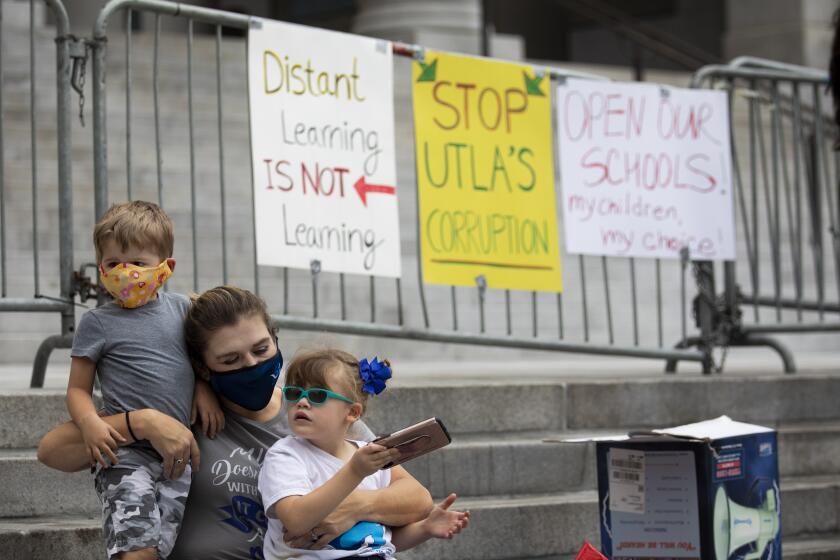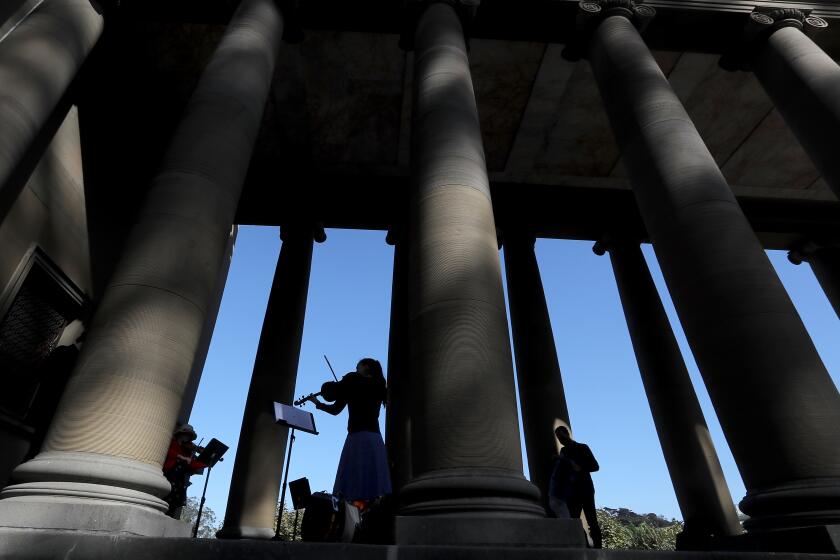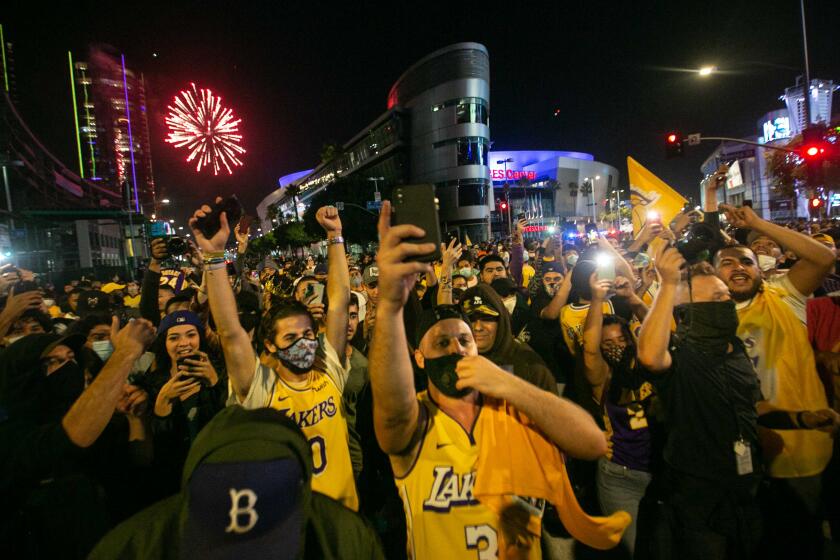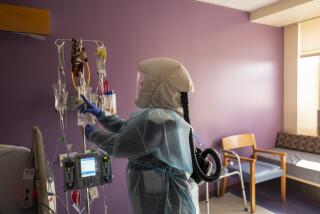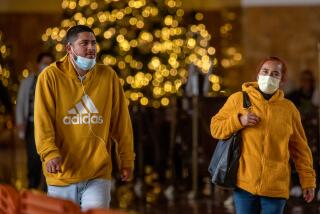Southern California counties see surge in new coronavirus cases
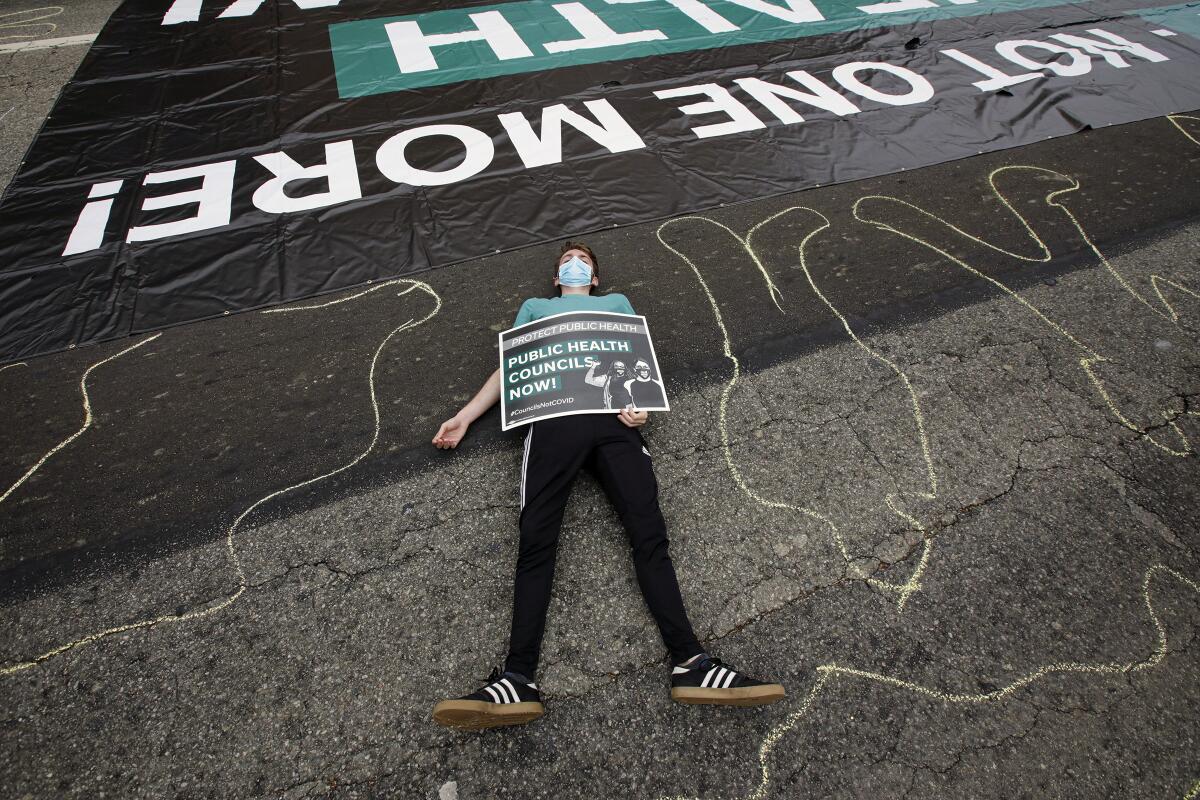
- Share via
Top state and local health officials continued Tuesday to voice growing alarm over recent increases in the number of people becoming infected by the novel coronavirus.
In four Southern California counties — Imperial, San Bernardino, Riverside and Los Angeles — the average numbers of new daily infections per 100,000 residents over the past week rank among the top five statewide, according to The Times’ coronavirus tracker.
Compared to the prior week, new cases in Los Angeles County jumped from an average of 63.4 for every 100,000 residents to 111.3. The average case rate climbed from 77.5 to 140.3 in San Bernardino and from 94.4 to 111.5 in Riverside, while in Imperial new cases soared from an average of 141.5 per 100,000 residents to 225.8.
“We are seeing increased disease in the community,” Riverside County Public Health Director Kim Saruwatari told the county Board of Supervisors on Tuesday. “This is consistent with what other areas of the country are seeing, and we are fortunate that we’re not seeing it to the level that many others are.”
In L.A. County, Public Health Director Barbara Ferrer said that the raw count of new cases has increased from an average of about 940 infections each day in early October to almost 1,200 as of last week.
The rise is “a cause for concern,” she said Monday, and came about because “of decisions we collectively made two to three weeks ago, and the action we’re taking today will influence whether we continue our recovery journey, we stall, or we step backward.”
The increases in Southern California were contributing to an overall rise statewide. According to the most recent available state data, the latest seven-day average of new COVID-19 cases in California is 4,303 — notably higher than the 14-day average of 3,699.
While the rising infection rates in Los Angeles County can be attributed in part to thousands of backlogged test results that were slow to be recorded, the fact that surrounding counties are experiencing rising case totals as well indicates backlogs may not be solely responsible.
Los Angeles County surpassed 300,000 confirmed coronavirus cases and reported its 7,000th death Monday, health officials said.
Though tallying the number of new infections is a useful metric, the case totals are driven in part by how much testing is done. Gov. Gavin Newsom said Tuesday, “we are never ashamed of testing more people.”
“The real headline for us in terms of alarm bells and red flags” is the positivity rate, Newsom said, referring to percentage of tests performed that come back postive for the virus. The positivity rate is an important measure because it provides a clear indication of how widespread the virus is in the area being tested and whether the amount of testing being done is keeping pace with the infection’s spread.
In California, the positivity rate has remained low for some time, though it has ticked up somewhat to a seven-day average of 3.2%, compared with a 14-day average of 2.9%, Newsom said during a briefing.
Overall, California has seen more than 911,000 total confirmed cases of COVID-19 and over 17,300 deaths.
Newsom did express concern about COVID-19 hotspots in California and across the nation, saying experts continue to predict a second or third wave in the weeks and months ahead.
“The hospitalization numbers here in the state of California, the ICU numbers here in the state of California, now beginning to trend back up. And the holidays in front of us,” he said during a briefing.
New case and testing positivity rates are the determining factors of the state’s color-coded, four-tier reopening road map, which determines how widely individual counties can reopen businesses and other communal spaces.
Seven counties officially progressed into new tiers Tuesday:
- Glenn and Mendocino graduated from the most restrictive purple Tier 1 to the red Tier 2
- Contra Costa, Marin, San Mateo and Santa Cruz moved from red Tier 2, to the orange Tier 3
- Calaveras moved from orange Tier 3 to Tier 4, the least restrictive “yellow” category
Additionally, Shasta County — which officials said last week would move into the purple tier — has now been placed in red after state officials took a closer look at its data, according to California Health and Human Services Secretary Dr. Mark Ghaly.
The nine counties remaining in the purple tier, which indicates widespread risk of community coronavirus transmission and stipulates that many businesses and public facilities either cannot operate indoors or can do so only at a strictly limited capacity, are Los Angeles, San Bernardino, Riverside, Imperial, Monterey, Tulare, Madera, Sonoma and Tehama.
By comparison, 10 counties — including San Francisco — are now situated in the yellow tier and considered to have minimal risk of transmission, according to the state.
During Tuesday’s Board of Supervisors’ meeting, Ferrer said L.A. County is likely at least three or four weeks away from getting into the red tier.
San Francisco shut down early in the pandemic and later limited reopening. Now the city is the first urban center in California where the risk of infection is rated as minimal.
While the increase in California’s case count remains relatively modest at this point, and pales in comparison to the sharp spikes seen elsewhere in the United States, officials say it’s vital that residents take steps now to curtail the trend.
Of particular concern is the coming holiday season, during which residents would traditionally travel and gather with family and friends. This year, though, those celebrations with other households would create numerous new opportunities for the coronavirus to spread.
With Halloween just around the corner, officials are emphasizing that Californians shouldn’t plan on celebrating the way they have in the past.
Most notably, state health officials have advised Californians to skip trick-or-treating this year, though they’ve stopped short of a ban.
“Trick-or-treating does pose a risk, and I say that knowing that my own children are not happy with me for saying that and lots of children around the county are not,” Saruwatari said. “Really, it’s about harm reduction.”
For instance, officials say families can mark the holiday by driving past decorated houses, catching a drive-in movie or holding online costume and pumpkin-carving contests.
“This pandemic has forced so many to sacrifice so much this year, and we recognize the frustration and disappointment with the holiday restrictions,” Ferrer said. “For now, though, it’s simply not safe to celebrate holidays the way we normally do.”
Social and public gatherings are one of several reasons why Southern California remains stuck in a coronavirus limbo, experts say.
L.A. County Health Officer Dr. Muntu Davis issued a health advisory Monday warning residents of the high potential risk of COVID-19 transmission at private gatherings and public celebrations.
Any such gatherings — including those in anticipation of a potential Dodgers’ World Series win this week — need to comply with public health protocols, he said, meaning they must be two hours or less, held outdoors with physical distancing and are limited to attendees from three different households.
Cloth face coverings are also required when not eating or drinking and food must be provided in single-serve disposable containers.
“There have been too many instances of people unknowingly spreading the virus at these types of gatherings, which, sadly, has led to new infections, serious illness and death,” Davis said in a statement. “We can prevent cases, but it will take action from each of us personally and collectively.”
Newsom also said Tuesday that California is crafting a plan to distribute COVID-19 vaccines once they become available. Those at highest risk, including healthcare workers and nursing home residents, are expected to receive vaccines first.
Oregon, Washington and Nevada have also joined a California-led effort to review the safety of all COVID-19 vaccines that receive federal approval before distributing them to the public, adding an extra safeguard amid concerns that the White House could rush the process. The scientific review panel will assess the publicly available data on the vaccines, a process Newsom said will not impede distribution.
“It will not cause any delays,” he said. “In fact, we would argue quite the contrary. It’s going to increase transparency and trust that I think we are looking for to make sure that we’re not doing anything to meet an arbitrary deadline or meet a political deadline.”
Times staff writers Phil Willon and Jaclyn Cosgrove contributed to this report.
More to Read
Sign up for Essential California
The most important California stories and recommendations in your inbox every morning.
You may occasionally receive promotional content from the Los Angeles Times.
